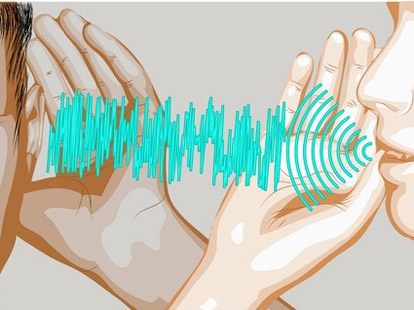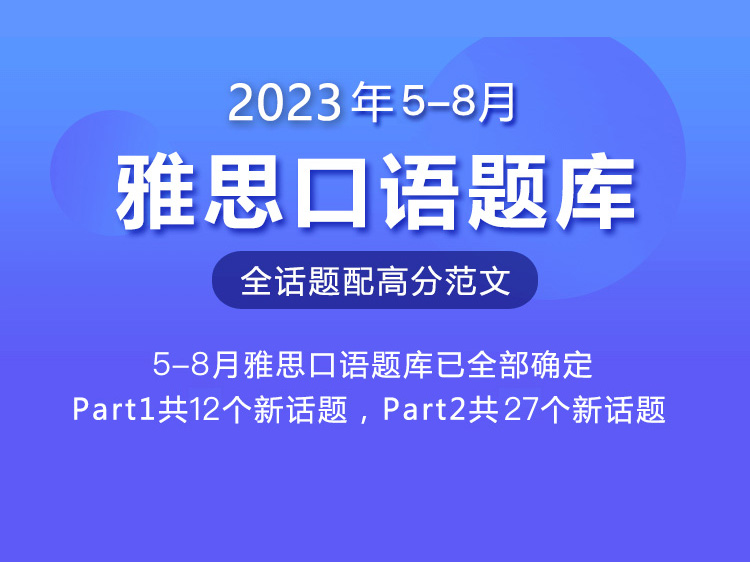听力专项突破:雅思听力配对题技巧
- 2018年08月23日11:05 来源:小站整理
- 参与(0) 阅读(24314)
根据小站雅思君这几年的观察,雅思听力配对题出题率提高不少,让原本语速快,反应时间短的听力考试难度又增加了。作为考生如何做好听力配对题呢?小站雅思君给大家带来听力配对题考试技巧讲解:
首先我们来看一下雅思听力配对题特点一:考生们阅读听力题目时会发现,配对题信息量小而且考试中不常遇到。一般来说配对题的常见题型形式有三种:
第一种是配对选项少于题目,例如Cambridge 7 Test 3 Section 3
Questions 26-30
In what time period can data from the float projects help with the following things?
Write the correct letter, A, B or C, next to questions 26-30.
A At present
B In the near future
C In the long-term future
26understanding of El Niño.
27understanding of climate change.
28naval rescues.
29sustainable fishing practices.
30crop selection.
第二种是配对选项多于题目,例如Cambridge 5 Test 4 Section 3
Questions 28-30
Which opinion does each person express about Box Telecom?
Choose your answers from the box and write the letters A-F next to questions 28-30.
Aits workers are motivated
Bit has too little investment
Cit will overcome its problems
Dits marketing campaign needs improvement
Eit is old-fashioned
Fit has strong managers
28Karin.
29Jason.
30the tutor.
还有一种是听力配对选项和题目数量相等。
雅思听力配对题可以看做是单选题的一种引申,配对的选项是对题干的解释或者说明。自从配对题出现后,多半题目的出现形势是第一种,也就是选项多于题目,很明显的有些选项是用不上的,大多数的烤鸭们同义词替换的能力和辨识速度有限,如果仅仅看着题目或者配对的信息文字较少而猜来猜去,不错还好,要是错了就会影响其他题目,甚至出现多重错误,影响整体分数。
据不完全统计,在2016年的雅思听力考试中,2月13日的Section 3题型为单选+配对;2月27日的Section 3题型为单选+配对;3月5日的Section 3题型为填空+单选+配对;6月25日的Section 2题型为配对+选择,Section 3为单选+配对;8月27日的Section 3题型为多选+配对。由此可见,配对题的出现虽然不能和出现率近乎100%的填空和选择题相比较,但是不断上升的出题概率也需要引起烤鸭的重视。
雅思听力配对题特点二:听力配对题的题目相对长,容易定位,并且一般是按照顺序原则
以Cambridge 5 Test 4 Section 3为例,建议烤鸭首先抓住顺序性原则,以题干为基础,Q28-30的题目均是人名,不会出现同义词替换,定位非常容易。但是选项很长,干扰性极强,所以不太建议先看选项。
Questions 28-30
Which opinion does each person express about Box Telecom?
Choose your answers from the box and write the letters A-F next to questions 28-30.
A its workers are motivated
B it has too little investment
C it will overcome its problems
D its marketing campaign needs improvement
E it is old-fashioned
F it has strong managers
28 Karin.
29 Jason.
30 the tutor.
听力原文及解析
Karin: Yes, I think I can do that. personally I’ve got great hopes for it. I think it will recover (28). 根据说话的人确定是Karin, 烤鸭们记下的词应该是recover, 那么回顾选项,我们会发现C选项里的overcome its problems解释了recover。 That advertising campaign they did was very innovative with their products-they set new trends. The company’s got to recover, don't you think, Jason?
Jason: Hmmm-I’m not sure. I think it ca but it’s not a forgone conclusion unless they manage to attract the right level of investment. The company definitely needs a boost(29) 根据说话的人确定是Jason, 烤鸭们首先定位到investment, 然后记下need a boost, 那么我们会发现B选项里的too little investment正好匹配。 and to attract more highly skilled workers if their recovery is to be long-lasting. When I was talking to the marketing manager he said to me that he thinks the company had got a great management team-but he would say that, wouldn’t he?- but they are suffering from having to work with outdated production machinery and that could cost a lot to put right.
Tutor: Well, personally, l think the stock market is to blame. I think they were expecting too much of the company and then inevitably it looked had when it didn't perform. The market should have had more realistic expectations. And I disagree with you about the advertising campaign Karin. That’s where they could do with some innovation(30) 根据说话的人确定是Tutor, 烤鸭们首先定位的词是campaign, 然后记下innovation(创新),那么回顾选项,我们会发现D选项里的匹配词也是campaign以及improvement和innovation的同义词转换。 - to get sales kick-started. Anyway, let’s see what you come up with… (fade)
雅思听力配对题特点二:虽然配对题题量小但是题目中的陷阱多
小站雅思君通过对过去题目的总结,发现配对题的出现总是附带性的(达不到10题),换言之几乎不会独立出现。接下来我们来详细分析一下Cambridge 7 Test 3 Section 3这个选项少于题目的配对题。首先,我们以题目的顺序为定位,26-30的定位词在下文中有标注出来。其次,烤鸭们要明白,一般选项是三个的情况都需要重复使用,在考试中的题目通常是对某种事物有着不同的看法,所以烤鸭们要根据录音表达做出选择。此时的陷阱之一就是:由于选项比较固定,题干中的内容在录音中会出现同义词替换,这样会引起烤鸭们定位困难。另外,说话人的语气和态度也是陷阱之二,烤鸭在做出选择时要听明白录音的言下之意,光听懂字面意思不够。
Questions 26-30
In what time period can data from the float projects help with the following things?
Write the correct letter, A, B or C, next to questions 26-30.
A At present
B In the near future
C In the long-term future
26understanding of El Niño.
27understanding of climate change.
28naval rescues
29sustainable fishing practices.
30crop selection.
听力原文及题目解析
You say you’re building models of the world’s ocean systems, but how’re they going to be used? And more importantly, when?
Some of the data has already helped in completing projects. For example, our understanding of the underlying causes of El Nino events is being confirmed by float data. (26)这一句当中的定位词是El Nino, 而这个词出现的句子中的时态是现在进行时,所以对应选项A。Another way we’re using float data is to help us to understand mechanics of climate change, like global warming and ozone depletion. That’s part of an ongoing variability study but the results are still a long way off. (27)这一句当中的定位词是climate change, 而这个词出现的句子中出现的时间提示a long way off即需要记下的笔记,所以对应选项C。 However, this is not the case with our ocean weather forecasting. Because we know from the floats what the prevailing weather conditions will be in certain parts of the ocean, we can advise the navy on search and rescue missions, that’s happening right now. (28)这一句当中的定位词只是navy, rescues在听力原文中和on search并列,而这个词出现的句子中出现的时间提示right now即需要记下的笔记,所以对应选项A。and may yachtsmen owe their lives to the success of this project. In addition, the float data can help us to look at the biological implications of ocean processes.
Would that help with preserving fish stocks?
Yes, and advising governments on fisheries legislation. We’re well on the way to completing a project on this, we hope it will help to bring about more sustainable fishing practices, we’ll be seeing the results of that quite soon. (29)这一句当中的定位词是fishing practices, 而这个词出现的句子中出现的时间提示quite soon即需要记下的笔记,所以对应选项B。
It sounds like the data from floats has lots of applications. Yes it does. It’s also a powerful agricultural tool. If we were aware of what the weather would be like, say next year, we could make sure that the farmers planted appropriate grain varieties to produce the best yield from the available rainfall. That sounds a bit like science fiction, especially when now we can’t even tell them when the draught will break. I agree that this concept is still a long way in the future, (30)这一句当中的定位词是crop selection, 整个录音里并没有出现原词,所以这题较难。Crop(农作物)在录音中的替换是grain(谷物),selection在录音中是farmers planted appropriate grain varieties to produce the best yield from the available rainfall的解释,整个词出现的句子中出现的时间提示a long way in the future即需要记下的笔记,所以对应选项C。 but it will come eventually and the float data will have made a contribution.
在听完整个段落之后考生们再针对选项作出一个整理。例如:
at present = now / right now / current(ly) / recent(ly)
in the near future = quite / very soon
in the long-term future = a long way in the future / in long term run / a long way off
当烤鸭整理成习惯后,也会在后期自己做听力时自发想到这些同义词替换,适时做笔记,录音结束后,根据笔记做配对验证,从而提高做题的正确率。
搭配题是雅思听力的常考题型之一,要想提高搭配题的正确率,必须掌握搭配题的出题特点。
搭配题通常出现在听力中Section 2或Section 3中,难度中等。这种题型主要分为两部分:一是题干部分;二是匹配选项。遇到这种题型,同学们不用担心读题时间,因为它比较容易定位,能快速通过题干部分找到信号词。
这种题型的难点在于需要对题干、匹配选项和听力音频三方面进行理解与对应,考察大家的快速反应能力。所以建议同学们做这种题型的时候,可以在题干旁边做一些简要的笔记,最后再与匹配选项进行对比,选出正确答案。
在这里给同学们梳理一下听力配对题的三大原则:
①顺序原则
“顺序原则”指的是题目在听力音频中出现的顺序是与题号顺序保持一致的。通过这一原则,我们在拿到搭配题的时候,心里可以预测题目的走向。
②同义替换与结构转换
搭配题一个最大的特点就是题干部分与匹配选项会出现同义替换与结构转换,这也是这一题型的难点所在。掌握这一特点之后,我们在做题的时候要积极主动的去预测同义替换与结构转换形式,而不是被动的接受。一般来说,最常出现的同义替换与结构转化包括:同义词或词组的替换,例如reserve替换为book;词性替换,如reserve替换为make a reservation,effect替换为affect;解释性替换,如human lifestyles替换为the ways in which we choose to live等等。建议同学们平常在做完题之后,再多听几遍,找出题目中出现的同义替换词。
③推理判断
搭配题除了会出现同义替换与结构转换之外,还会出现推理判断。听力音频中不会直接告诉你正确答案,而是会给出一些提示信息,同学们要通过这些提示信息进行简单推理即可得出正确答案。
了解了搭配题的题型特点与出题特点之后,我们要清楚它的做题步骤。
①注意匹配选项数量
拿到搭配题后,先确定搭配选项与题干之间是“一对一”还是“一对多”。
②看题干,找到信号词(定位词),注意信号词在听力音频中会出现同义替换和结构转换。
③根据“顺序原则”把握原文脉络。
④看搭配选项,划下关键词,注意关键词在听力音频中会出现替换或推理判断。
在这里,我们以剑桥真题为例,具体讲解一下搭配题。
Choose FOUR answers from the box and write the correct letter, A-F, next to questions 37-40.
A gave false data
B decided to stop participating
C refused to tell Shona about their job
D kept changing their mind about participating
E became very angry with Shona
F was worried about confidentiality
People interviewed by Shona
37 a person interviewed in the street ………
38 an undergraduate at the university ………
39 a colleague in her department ………
40 a tutor in a foreign university ………
做题步骤:
题目中方框内的信息(A-F)为搭配选项,下面(题号37-40)为题干部分。
我们先确定搭配选项与题干之间为“一对一”。
然后再看题干部分,找出每个题目的信号词(定位词)。37题信号词为“person” “street”;38题信号词为“undergraduate”;39题信号词为“colleague”;40题信号词为“tutor”。根据“顺序原则”我们很清楚的知道听力音频中肯定会先说37题再说38题,以此类推。
最后再看搭配选项,划出关键词。选项A关键词为“false data”;选项B关键词为“stop participating”;选项C关键词为“refuse to tell job”;选项D关键词为“kept changing mind”;选项E关键词为“angry with Shona”;选项F关键词为“confidentiality”。
在听音频的时候,要时刻提醒自己注意题干信号词与搭配选项关键词会出现同义替换和结构转换或推理判断。同学们在做题的过程中,如果反应速度慢的话,可以在题干旁做一些简单的笔记,记下关键信息,最后再与搭配选项进行对比,选出正确答案。
听力配对题题目解析
在听力音频中,37题信号词“person” “street”替换成“subject”“shopping in town”,听力音频中提到“pull out”与选项B的关键词“stop participating”替换,所以37题选B;38题信号词“undergraduate”替换成“a first-year student”,听力音频中提到“no name would be traceable”与选项F的关键词“confidentiality”替换,所以38题选F;39题信号词“colleague”替换成“one of the people that I work with”, 听力音频中提到“one minute he said he’d do it, then the next day he wouldn’t, and in the end he did do it”与选项D的关键词“kept changing mind”替换,所以39题选D;40题信号词“tutor”替换成“teacher”, 听力音频中提到“he wouldn’t tell me what his work involved”与选项C的关键词“refuse to tell job”替换,所以40题选C。
最后,关于如何做好雅思听力配对题,考生们是否掌握了做题技巧呢?小站雅思君还是要提醒大家,技巧虽好,在备考冲刺阶段考生们还是要多注意听力题型的专项训练,查漏补缺。争取轻松应对各大听力疑难杂症。







































